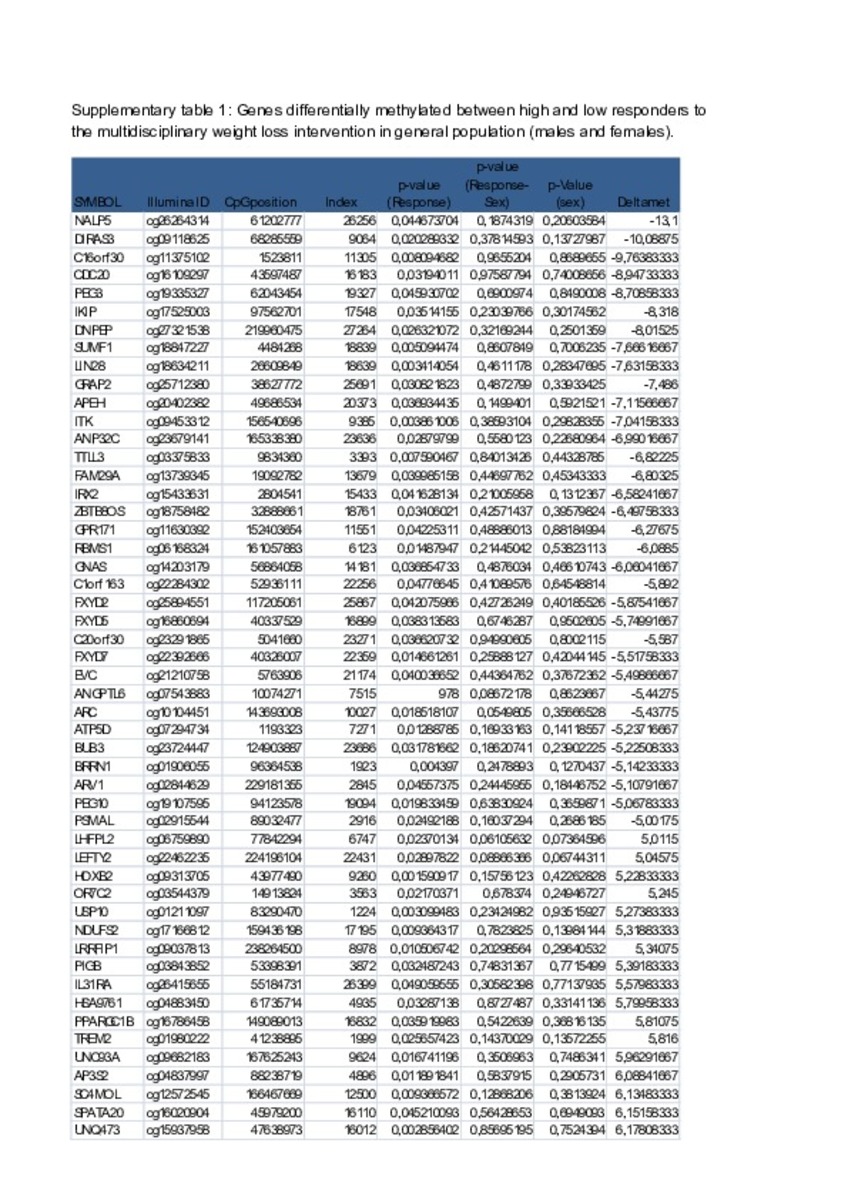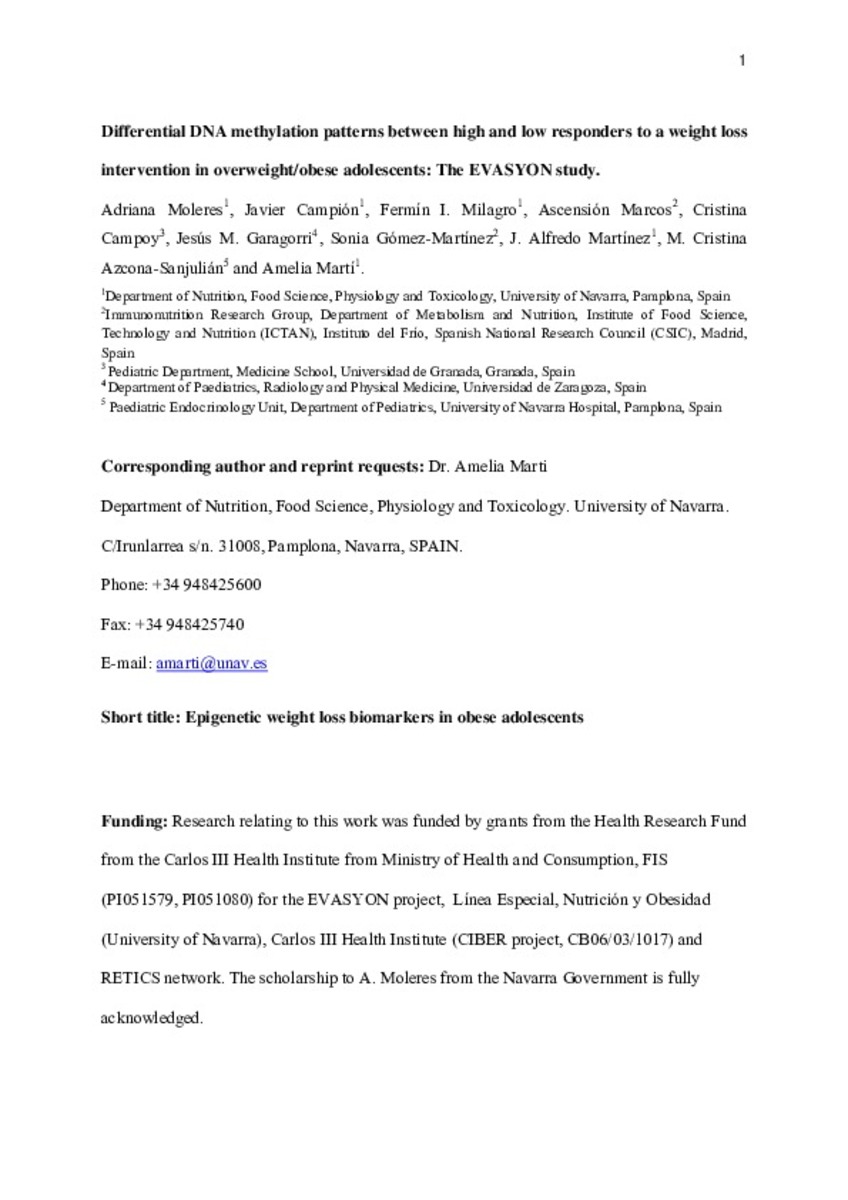Full metadata record
| DC Field | Value | Language |
|---|---|---|
| dc.creator | Moleres, A. (Adriana) | - |
| dc.creator | Milagro-Yoldi, F.I. (Fermín Ignacio) | - |
| dc.creator | Campión-Zabalza, J. (Javier) | - |
| dc.creator | Marcos, A. (Ascensión) | - |
| dc.creator | Campoy, C. (Cristina) | - |
| dc.creator | Garagorri, J.M. (Jesús Maria) | - |
| dc.creator | Gomez-Martinez, S. (Sonia) | - |
| dc.creator | Martinez, J.A. (José Alfredo) | - |
| dc.creator | Azcona-San-Julian, M.C. (María Cristina) | - |
| dc.creator | Marti-del-Moral, A. (Amelia) | - |
| dc.date.accessioned | 2013-04-22T15:27:27Z | - |
| dc.date.available | 2013-04-22T15:27:27Z | - |
| dc.date.issued | 2013 | - |
| dc.identifier.citation | Moleres A, Campion J, Milagro FI, Marcos A, Campoy C, Garagorri JM, et al. Differential DNA methylation patterns between high and low responders to a weight loss intervention in overweight or obese adolescents: the EVASYON study. FASEB J 2013 Mar 8. | es_ES |
| dc.identifier.issn | 0892-6638 | - |
| dc.identifier.uri | https://hdl.handle.net/10171/29096 | - |
| dc.description.abstract | In recent years, epigenetic markers emerged as a new tool to understand the influence of lifestyle factors on obesity phenotypes. Adolescence is considered an important epigenetic window over a human's lifetime. The objective of this work was to explore baseline changes in DNA methylation that could be associated with a better weight loss response after a multidisciplinary intervention program in Spanish obese or overweight adolescents. Overweight or obese adolescents (n=107) undergoing 10 wk of a multidisciplinary intervention for weight loss were assigned as high or low responders to the treatment. A methylation microarray was performed to search for baseline epigenetic differences between the 2 groups (12 subjects/group), and MALDI-TOF mass spectrometry was used to validate (n=107) relevant CpG sites and surrounding regions. After validation, 5 regions located in or near AQP9, DUSP22, HIPK3, TNNT1, and TNNI3 genes showed differential methylation levels between high and low responders to the multidisciplinary weight loss intervention. Moreover, a calculated methylation score was significantly associated with changes in weight, BMI-SDS, and body fat mass loss after the treatment. In summary, we have identified 5 DNA regions that are differentially methylated depending on weight loss response. These methylation changes may help to better understand the weight loss response in obese adolescents. | es_ES |
| dc.language.iso | eng | es_ES |
| dc.publisher | Federation of American Society of Experimental Biology (FASEB) | es_ES |
| dc.rights | info:eu-repo/semantics/openAccess | es_ES |
| dc.subject | Epigenetics | es_ES |
| dc.subject | Weight loss intervention | es_ES |
| dc.subject | Biomarkers | es_ES |
| dc.subject | Dieting response | es_ES |
| dc.title | Differential DNA methylation patterns between high and low responders to a weight loss intervention in overweight or obese adolescents: the EVASYON study | es_ES |
| dc.type | info:eu-repo/semantics/article | es_ES |
| dc.type.driver | info:eu-repo/semantics/article | es_ES |
| dc.identifier.doi | http://dx.doi.org/10.1096/fj.12-215566 | es_ES |
Statistics and impact
Items in Dadun are protected by copyright, with all rights reserved, unless otherwise indicated.












